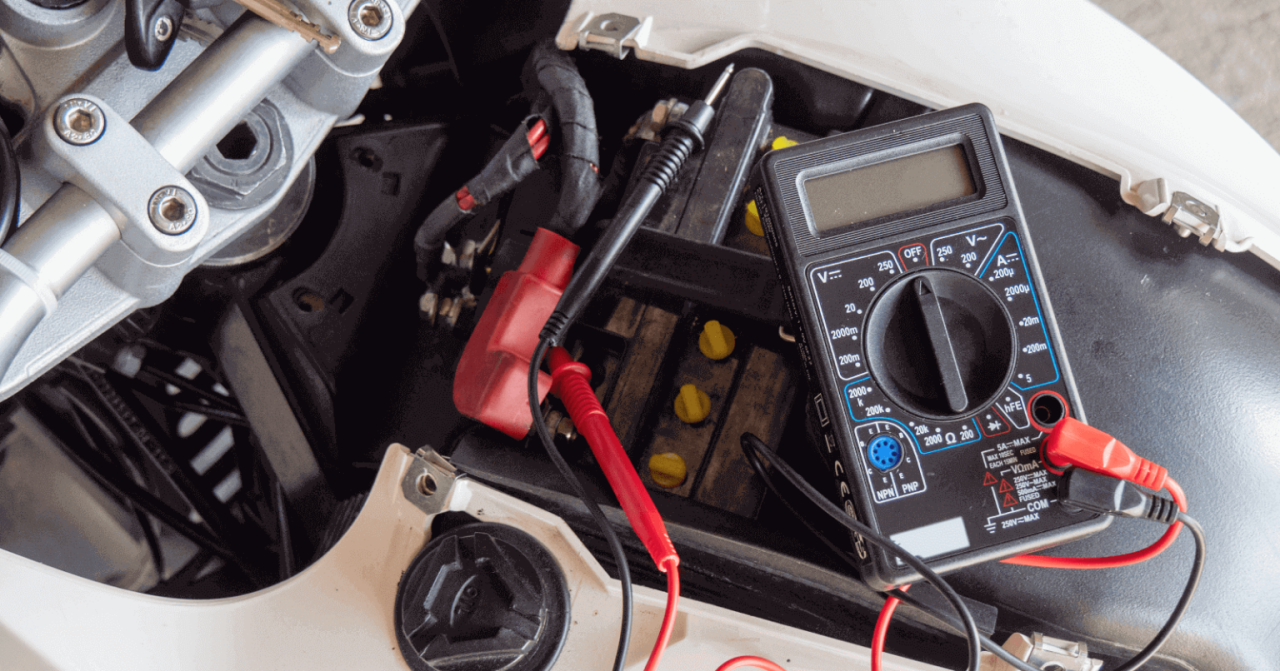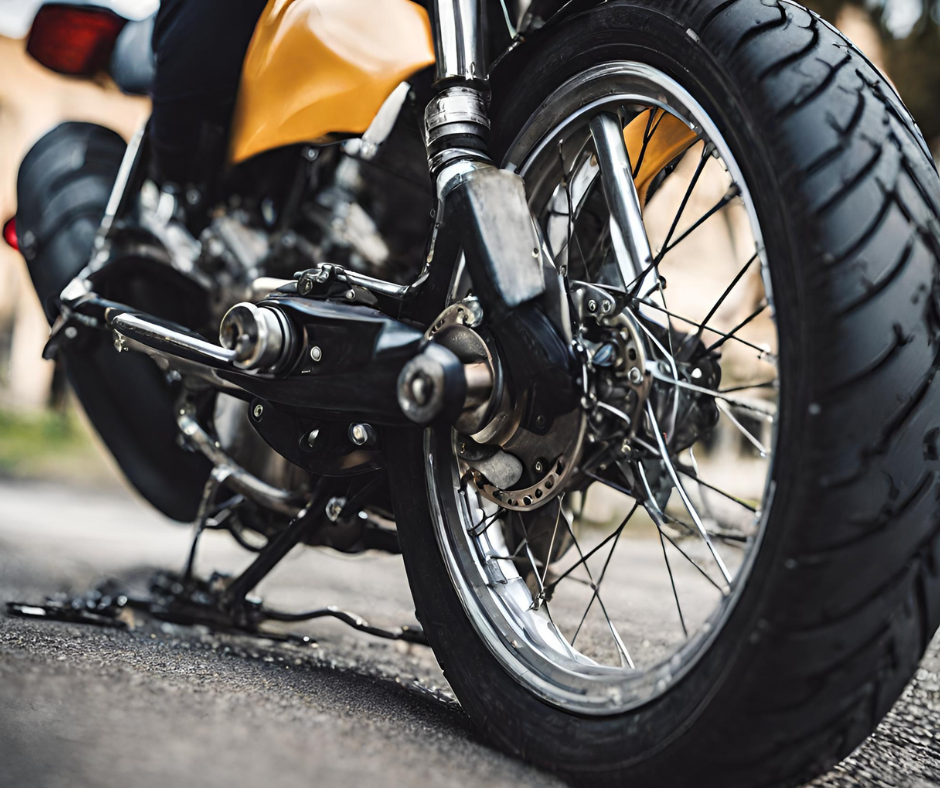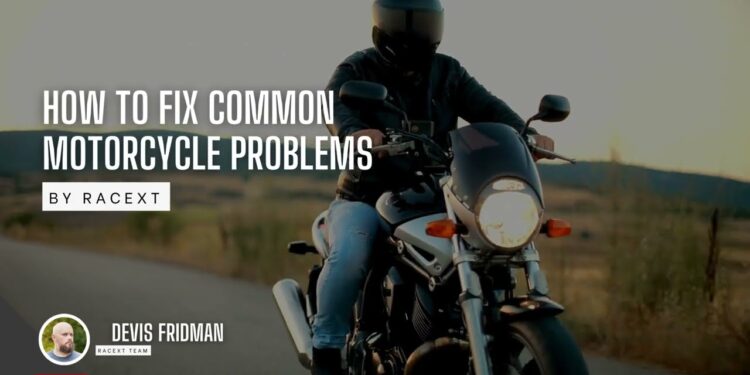Starting off with the topic of Common motorcycle problems and how to fix them, this introduction aims to grab the attention of readers and provide a sneak peek into the world of motorcycle maintenance and troubleshooting.
In the following paragraph, we will delve deeper into the various issues faced by riders and explore effective solutions to keep motorcycles running smoothly.
Common Motorcycle Problems

Motorcycles, like any machine, can encounter various issues that affect their performance and safety. Understanding these common problems is essential for proper maintenance and troubleshooting.
1. Engine Overheating
One of the most common issues riders face is engine overheating. This can be caused by a lack of coolant, a malfunctioning radiator, or a clogged cooling system. The impact of engine overheating can lead to reduced power output, engine damage, and even complete breakdown if not addressed promptly.
Different types of motorcycles may have specific cooling systems that require different maintenance procedures to prevent overheating.
2. Electrical Problems
Electrical issues, such as a dead battery, faulty wiring, or a malfunctioning ignition system, can significantly impact a motorcycle's performance. These problems can result in starting issues, stalling, or complete electrical failure. Depending on the type of motorcycle, the electrical system may vary in complexity, requiring different diagnostic tools and expertise for troubleshooting.
3. Brake Malfunction
Brake problems, including worn brake pads, leaking brake fluid, or a malfunctioning brake system, pose a significant safety risk for riders. The impact of brake issues can lead to reduced stopping power, longer braking distances, and potential accidents. Different types of motorcycles may have different braking systems, such as drum brakes, disc brakes, or ABS, each requiring specific maintenance and repair techniques.
4. Carburetor Issues
Carburetor problems, such as clogging, improper fuel-air mixture, or vacuum leaks, can result in poor engine performance, rough idle, or difficulty starting the motorcycle. The impact of carburetor issues can affect fuel efficiency, throttle response, and overall ride quality. Different types of motorcycles may have different carburetor designs, requiring specific tuning and cleaning procedures to resolve these issues.
5. Chain and Sprocket Wear
Chain and sprocket wear is a common problem that affects the drivetrain of motorcycles. Over time, the chain can stretch, and the sprockets can wear out, leading to poor acceleration, noisy operation, and potential chain derailment. The impact of chain and sprocket wear can result in reduced efficiency, power loss, and costly repairs if not addressed promptly.
Different types of motorcycles may have different chain and sprocket configurations, requiring specific maintenance schedules and replacement intervals.
Engine Problems

When it comes to motorcycles, engine problems can be a major headache for riders. Issues such as overheating, poor acceleration, or unusual noises can disrupt your ride and even pose safety risks. However, with proper maintenance and troubleshooting, many engine problems can be resolved efficiently.
Overheating
Overheating is a common engine problem that can be caused by a variety of factors, such as low coolant levels, a malfunctioning thermostat, or a clogged radiator. To troubleshoot and fix overheating issues, follow these steps:
- Check the coolant levels and top up if necessary.
- Inspect the thermostat for any malfunctions and replace if needed.
- Clean the radiator to remove any debris or blockages.
- Ensure proper airflow by checking the cooling fan and associated components.
Poor Acceleration
Poor acceleration can be frustrating for riders and is often linked to issues with the fuel system, air intake, or spark plugs. To address poor acceleration problems, consider the following steps:
- Clean or replace the air filter to improve air intake.
- Check the fuel system for clogs or dirty components and clean or replace as necessary.
- Inspect the spark plugs for wear and tear, and replace if needed.
- Ensure proper fuel mixture and adjust the carburetor if required.
Unusual Noises
Unusual noises coming from the engine can indicate various issues, such as loose components, worn-out parts, or lack of lubrication. Here's how you can troubleshoot and fix engine noises:
- Identify the source of the noise by listening carefully while the engine is running.
- Tighten any loose bolts or components that may be causing vibrations.
- Inspect the cam chain tensioner for proper adjustment and replace if necessary.
- Check the oil level and quality, and perform an oil change if needed.
Electrical System Problems

When it comes to motorcycles, the electrical system plays a crucial role in ensuring the proper functioning of various components. From starting the engine to powering the lights, a well-maintained electrical system is essential for a smooth ride. However, like any other system, the electrical components of a motorcycle can encounter issues that may need attention.
Common Electrical System Issues
- Dead Battery: One of the most common electrical problems faced by motorcycle owners is a dead battery. This can be caused by a variety of factors, including age, lack of maintenance, or leaving the lights on when the engine is off.
- Faulty Wiring: Another issue that can arise is faulty wiring, which can lead to a range of problems such as shorts, blown fuses, or inconsistent power supply to different components.
- Malfunctioning Lights: Dim or flickering lights, both headlights, and turn signals, are often indicators of electrical issues within the system. This can be caused by a faulty connection, damaged bulb, or a problem with the charging system.
Diagnosing and Repairing Electrical Problems
When faced with electrical issues on your motorcycle, it's important to approach the diagnosis and repair process with caution to ensure safety and prevent further damage. Here are some tips to help you troubleshoot and fix electrical problems:
- Start by checking the battery voltage using a multimeter to determine if it needs to be recharged or replaced.
- Inspect the wiring harness for any signs of wear, damage, or loose connections. Repair or replace any faulty wiring as needed.
- Test the lights and other electrical components to identify the specific issue. Replace any malfunctioning bulbs or components accordingly.
- Consider consulting a professional mechanic if you are unsure about diagnosing or repairing the electrical problem yourself to avoid any safety risks.
Suspension and Handling Problems
When it comes to motorcycles, suspension plays a crucial role in ensuring a smooth and stable ride. A well-functioning suspension system helps absorb bumps and shocks from the road, resulting in better handling and overall comfort for the rider. However, when suspension issues arise, it can greatly impact the ride quality and safety of the motorcycle.
Signs of Suspension Problems
- Uneven tire wear: If you notice that your tires are wearing unevenly, it could be a sign of suspension problems. Uneven tire wear is often caused by misaligned or worn-out suspension components.
- Poor handling: When your motorcycle feels unstable or difficult to control, it could be due to suspension issues. You may experience excessive bouncing, bottoming out, or a rough ride, indicating that the suspension is not functioning properly.
- Excessive dive or squat: During braking or acceleration, if you notice a significant dive in the front end or squat in the rear end of the motorcycle, it could be a sign of suspension problems.
Checking and Adjusting the Suspension
Regularly checking and maintaining your motorcycle's suspension is essential to ensure optimal performance. Here are some steps to help you identify and resolve suspension problems:
- Visual inspection: Check for any leaks, damage, or signs of wear on the suspension components such as the forks, shocks, and linkage.
- Sag measurement: Measure the sag (static and rider sag) to determine if the suspension is properly set up for your weight and riding style. Adjust the preload or damping settings as needed.
- Rebound and compression adjustments: Depending on your motorcycle's suspension system, adjust the rebound and compression settings to fine-tune the suspension for better handling and comfort.
- Professional inspection: If you are unsure about how to check or adjust the suspension, it is recommended to consult a professional mechanic or suspension specialist for assistance.
Braking System Problems
Brakes are a crucial component of a motorcycle, providing the ability to slow down and stop safely. However, like any other part of the bike, the braking system can develop issues over time. Common brake system problems can include squeaking brakes, brake fluid leaks, or spongy brakes.
Riding with faulty brakes can be extremely dangerous, increasing the risk of accidents and injuries. It is essential to address any braking system problems promptly to ensure your safety on the road.
Squeaking Brakes
One common issue motorcyclists may encounter is squeaking brakes. This can be caused by a variety of factors, such as worn brake pads, debris caught in the brake system, or improper alignment of the brake components. To troubleshoot and fix squeaking brakes, follow these steps:
- Inspect the brake pads for wear and tear. Replace them if necessary.
- Clean the brake system to remove any debris or dirt that may be causing the noise.
- Check the alignment of the brake calipers and brake discs to ensure they are properly positioned.
- If the issue persists, consult a professional mechanic for further diagnosis and repair.
Brake Fluid Leaks
Another common problem with the braking system is brake fluid leaks. Leaking brake fluid can compromise the effectiveness of your brakes and should be addressed immediately. To troubleshoot and fix brake fluid leaks, take the following steps:
- Inspect the brake lines, connections, and master cylinder for any signs of leakage.
- If you identify a leak, determine the source and replace the damaged components as needed.
- Top up the brake fluid reservoir with the recommended type of brake fluid.
- Bleed the brake system to remove any air bubbles that may have entered the system due to the leak.
Spongy Brakes
Spongy brakes, where the brake lever or pedal feels soft and lacks responsiveness, can be a sign of air or moisture in the brake lines. To troubleshoot and fix spongy brakes, follow these steps:
- Check the brake fluid level in the reservoir and top it up if necessary.
- Bleed the brake system to remove any air or moisture that may be affecting brake performance.
- Inspect the brake lines for any signs of damage or leaks that may be allowing air to enter the system.
- If the issue persists, consult a professional mechanic to diagnose and repair the problem.
Ultimate Conclusion
Wrapping up our discussion on Common motorcycle problems and how to fix them, we have covered the key aspects of engine, electrical system, suspension, handling, and braking system problems. By understanding these common issues and their solutions, riders can ensure a safer and smoother riding experience.
Question & Answer Hub
How can I prevent engine overheating?
To prevent engine overheating, ensure regular maintenance checks, proper coolant levels, and clean air filters.
What should I do if my motorcycle's lights are malfunctioning?
Check the wiring connections, replace any faulty bulbs, and inspect the battery to troubleshoot and fix lighting issues.
How do I adjust the suspension of my motorcycle?
Consult your motorcycle's manual for specific instructions on adjusting the suspension to improve ride quality.














